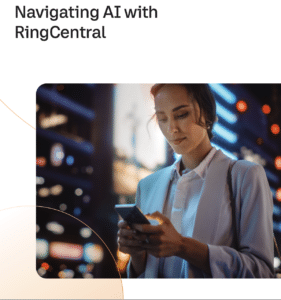Revenue intelligence (RI) is a growing market. According to the Gartner Market Guide for Revenue Intelligence Platforms:
- By 2025, 70% of all B2B seller-buyer interactions will be recorded or analyzed to extract competitive, deal, and market insights using AI/ML and natural language processing (NLP).
- By 2025, 75% of B2B sales organizations will replace traditional sales playbooks with AI-based guided selling solutions.
Why is this technology evolving so rapidly? It’s because of the benefits it provides. Revenue intelligence empowers sales, marketing, and service teams with holistic access to critical data throughout the selling pipeline. Through high-powered AI analysis, organizations can identify sales opportunities with a much higher degree of accuracy than they can through non-RI methods or human intuition.
In this article, we’ll cover:
- What is revenue intelligence?
- Examples of revenue intelligence
- Benefits of revenue intelligence for sales
- Revenue intelligence vs. intelligent revenue
- Revenue intelligence platforms

AI is changing the way businesses work… but there’s a learning curve.
Learn the opportunities—and roadblocks—of AI and how to implement more intelligent business practices.
What is revenue intelligence?
Revenue intelligence involves gathering sales and product usage data from leads, prospects, and existing customers and then using artificial intelligence (AI) to analyze it for patterns and trends that can help organizations predict future sales opportunities and outcomes.
It is used by sales, marketing, and support teams to maximize sales decisions at each stage of the customer funnel.
Convergence of data from sales, marketing, and support teams is a critical factor of RI. A more holistic view of this data allows for optimized collaboration and synergy to most effectively manage all contacts, leads, and customers. Data is centralized across all functions and throughout the customer lifecycle, from leads to repeat customers.
Data used in revenue intelligence is sourced from a variety of places, including:
- Site data and behavioral interactions
- Form submissions
- Downloads
- Prospect and customer interactions
- Email opens, reads, and clicks

Examples of revenue intelligence
One of the best ways to understand revenue intelligence is to see how it applies to specific circumstances. The following are some practical applications of RI.
- Advanced buying signals. Through AI analysis, sales teams receive automated alerts when a prospect’s variables present an opportunity with a high win potential. Factors such as timeline to purchase, time within the selling cycle, projected dollar amount, and previous buying activity all contribute to provide an accurate picture of potential sales.
- Better targeting data. Tied to advanced buying signals, AI analysis gives the most accurate predictions on likely sales outcomes, which allows reps to focus time and energy on the most profitable prospects. Marketing and sales functions rely on analytics to identify and learn more about targeted customers.
- Product usage analysis. Leveraging data such as usage frequency, key interactions, timelines and more, marketers can better determine how users engage with products. These insights allow for more effective marketing strategies and targeted promotional offers.
Benefits for sales teams
There are numerous advantages of revenue intelligence over other data-driven or human-driven methods of forecasting, including:
- Fewer data silos. Traditional marketing, selling, and service processes exist in silos. Data is collected and analyzed in each department, and analytics software centers on the respective needs. With RI, cross-functional data is used to create more synergy and collaboration among customer-facing units.
- Sales funnel focus. Revenue intelligence addresses every stage in the revenue cycle, with analysis of leads, conversions, and post-purchase product usage. This complete cycle view allows for greater strategy in attracting and retaining the most ideal customers.
- Competitive advantage. In a competitive industry, the line between success and failure is very thin. Leveraging the power of AI-driven data to optimize the entire customer lifecycle is a game-changer.
Revenue intelligence vs. intelligent revenue
“Revenue intelligence” is actually one trait or component of the broader concept of “intelligent revenue.” Intelligent revenue consists of three central traits:
- Revenue intelligence. As indicated, RI is a centralized approach to leverage data and AI to achieve the greater customer lifecycle visibility.
- Revenue performance. RP is a motivational system of rewards and incentives used to drive sales reps to generate the highest possible revenue and profit.
- Revenue optimization. RO is a method of analysis used to identify gaps in productivity caused by misalignment between RI and RP.
In essence, revenue intelligence provides the forecasting accuracy needed to build and manage motivation and performance systems. Within the scope of intelligent revenue, RI is the analytics component used to create optimized customer-centric sales processes.
Revenue intelligence platforms
There are several types of solutions used in revenue intelligence. The following are some key examples:
- Digital communications systems are cloud-based, cross-channel communications systems that enable AI-driven data tracking of customer interactions across all channels.
- CRM software is comprehensive software used to gather, store, and leverage prospect and customer data with the objective of optimizing the customer experience and maximizing profitability.
- Predictive Analytics, which is more narrow in function than CRM software, offers dedicated tools for gathering data and generating desired reports that illustrate key insights.
- Enterprise Resource Planning is software that reduces inefficiencies in resource utilization by eliminating silos and facilitating a more system-wide approach to resource allocation and usage tracking.
RingSense for Sales: More wins, less effort
In hyper-competitive industries, revenue intelligence can provide a critical point of differentiation from competitors. It allows you to synergize cross-functional data, leveraging artificial intelligence to get the most accurate view of winnable, profitable customers. Optimizing efficiency and people resources throughout the revenue cycle is important to sustained success.
With RingSense for Sales, AI automates the most tedious parts of the sales process, so you can focus on closing:
- AI makes sense of your customer conversations and automatically updates your CRM records with summaries and action items
- Proactively get ahead of deal risk by tracking key selling moments
- Bring in the right players and top performers at the right time
See how RingSense for Sales works
Originally published Jan 18, 2024, updated Jan 24, 2024





